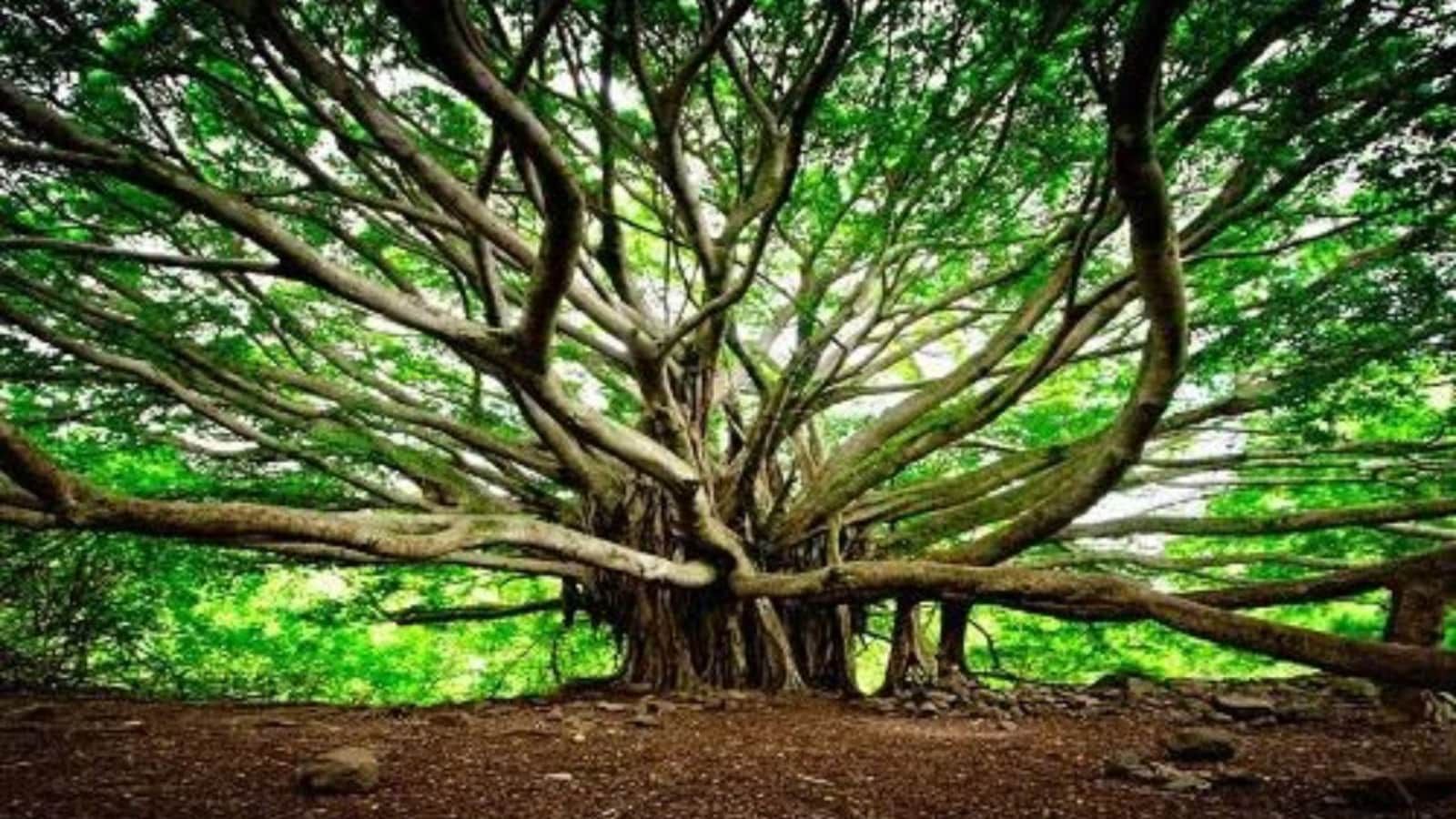
A 550-year-old banyan tree, spanning an area equivalent to four football fields, stands as a sanctuary for women seeking fertility in Andhra Pradesh, India.
Known as Thimmamma Marrimanu, this extraordinary tree has grown into a sprawling natural wonder, resembling a small forest rather than a single organism.
Its immense size and age have made it a living testament to both nature’s grandeur and human devotion.
The tree’s origins are steeped in local legend. Centuries ago, a woman named Thimmamma, grieving the loss of her husband, chose to follow the tradition of sati by immolating herself on his funeral pyre.
From the ashes of this tragic event, a banyan sapling emerged, symbolising resilience and renewal.
Over the centuries, the tree grew exponentially, its branches extending outward and sending down aerial roots that hardened into new trunks.
This unique growth pattern has created a vast network of interconnected trunks, making it appear as an entire grove rather than a single tree.
Today, a small temple dedicated to Thimmamma lies beneath the tree’s expansive canopy. Couples facing challenges with conception visit the site, believing that Thimmamma’s spirit blesses them with fertility.
The tree has thus become a place of hope, faith, and reverence, deeply intertwined with the cultural and spiritual fabric of the region.
Beyond its mythological significance, Thimmamma Marrimanu is a natural marvel. Unlike typical trees that grow vertically, the banyan tree expands horizontally, with its branches extending in all directions and forming new trunks as they touch the ground.
This process has allowed the tree to cover an astonishing area, earning it recognition by Guinness World Records as the largest tree in the world by canopy spread.
However, its true essence transcends records; it is a living, breathing ecosystem that has endured centuries of climatic changes, storms, and human activity.
Beneath its sprawling branches, one can experience a serene environment where sunlight filters through dense foliage, birds rustle in the leaves, and insects hum in the background.
The tree serves as a habitat for countless species and a gathering place for communities, hosting festivals, prayers, and moments of quiet contemplation.
In an era marked by rapid urbanisation and environmental degradation, Thimmamma Marrimanu stands as a resilient symbol of nature’s enduring power.l.ftr gnn
It continues to thrive, untouched by the encroachments of modern development, and is believed to grow for centuries to come.
Read Full Story





















Facebook
Twitter
Pinterest
Instagram
Google+
YouTube
LinkedIn
RSS